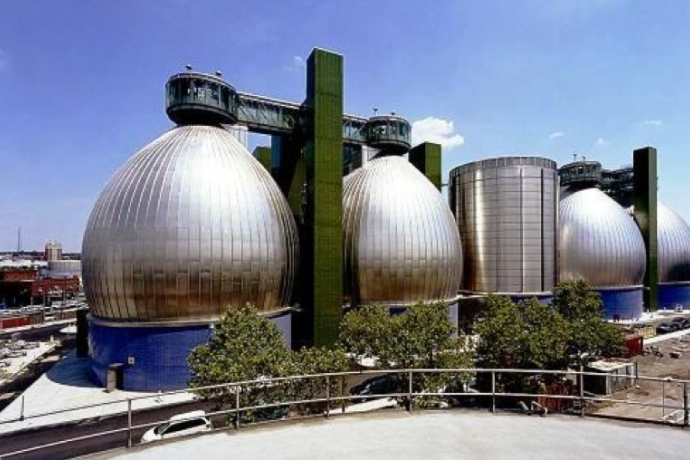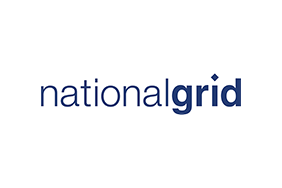National Grid: Delivering the Future of Heat
National Grid’s upcoming plan for natural gas will help combat climate change by decarbonizing the gas network
Published 04-22-19
Submitted by National Grid
 Renewable natural gas (RNG) will be an important part of the future of heat. Pictured above is the Newtown Creek Wastewater Treatment Plant in Brooklyn, where National Grid is partnering with the New York City Department of Environmental Protection to con
Renewable natural gas (RNG) will be an important part of the future of heat. Pictured above is the Newtown Creek Wastewater Treatment Plant in Brooklyn, where National Grid is partnering with the New York City Department of Environmental Protection to conAs an extension of its June 2018 Northeast 80x50 Pathway, a deep dive analysis into ways to reduce greenhouse gas (GHG) emissions, National Grid is on the verge of filing proposals for the future of heat with the New York State Public Service Commission (PSC) to help provide a greater platform to combat climate change by decarbonizing the gas network.
"While the scope of taking on climate change can be hard to comprehend, I am confident that we have more solutions at hand than we recognize,” says National Grid New York President John Bruckner on Earth Day. “Working together with regulators, elected officials, environmental groups and customers to achieve cost-effective and innovative solutions is the only way forward.”
Much like natural gas helped lower GHG emissions in the power sector, Bruckner believesthat natural gas will play an important role in transforming the heating sector. Achieving the targetsoutlined in its Pathway means dramatically reducing reliance on the most expensive and mostpolluting heating fuels: fuel oil, propane and kerosene. New York can achieve this goal byconverting homes and businesses to more affordable and cleaner natural gas heat whereverpossible and electric heat pumps elsewhere.
“When it comes to the climate debate, the expansion of our natural gas distribution system is always a hot topic too often framed as black and white,” Bruckner adds. “Those who support gas expansion are painted as the enemies of the common good and those pushing for all renewables are characterized as out of touch with the realities of our current energy system and economy. We’ve got to find a better way.”
As an energy company serving four million customers across the Empire State, National Grid is in a unique position to act and bring people together and use its gas network to help the state meet its GHG reduction goals. For the past several years, the company has been transitioning from a traditional utility to a new kind of energy company that merges core utility best practices with innovation, technology and clean energy solutions.
The company will soon be submitting proposals to the PSC to pilot new programs and technologies designed to stimulate new clean energy alternatives for its downstate New York natural gas networks. Some of those innovations include:
A green gas tariff that will give downstate customers the choice to supplement their natural gas usage with RNG – pipeline quality gas produced from biomass, wastewater or renewable electricity with lower emissions than from fossil fuel derived natural gas. The company believes RNG used for heating purposes should have incentives or credits in place to promote its use.
A power-to-gas pilot project that would produce RNG to help demonstrate the technical and economic potential of converting excess renewable electricity to hydrogen through electrolysis of water. Hydrogen from this process can be directly blended into the gas distribution system or be combined with carbon dioxide to produce synthetic methane and use the existing natural gas network to store and deliver that energy to homes and businesses.
A hydrogen blending study to assess how much hydrogen can safely be blended into the existing system.
A program to facilitate RNG interconnections by lowering the cost to connect RNG facilities to our network. To support this work, we are launching a “Future of Heat Engineering Group.”
An enhanced gas demand-response program that will give customers the choice to modify their gas consumption in response to price signals.
An expanded geothermal pilot to test out a utility-ownership business model and its ability to complement gas network operations. This would be a larger scale, second phase of a previously-approved and successful REV pilot that tested the ability of shared-loop geothermal, a heating source that uses the earth’s underground temperature to meet customer heating needs.
“This isn’t new for us, smart solutions are already underway,” adds Bruckner. “In Brooklyn, we have been injecting RNG from a landfill into our New York gas network since the 1980s and are working with the city of New York on a wastewater treatment facility that will inject RNG into our system later this year.
“We believe that natural gas can play a critical role in supporting the growth of electric vehicles, wind, solar, and other renewable technologies while also delivering lower-carbon heating. Expanded access to natural gas has resulted in emissions reductions in the Northeast by reducing the use of more carbon-intensive delivered fuels, like oil and propane.
“But our desire to create a future space for natural gas in the heat and energy landscape is countered by the potential unavailability of natural gas resources due to system constraints. If not addressed in a timely way, we will not be able to serve new gas customers in the downstate area. This could negatively impact emissions and economic development as customers will then move to other sources of energy such as oil, to meet their energy demands.”
###
About National Grid
National Grid (LSE: NG; NYSE: NGG) is an electricity, natural gas, and clean energy delivery company serving more than 20 million people through our networks in New York, Massachusetts, and Rhode Island. We are the largest distributor of natural gas in the Northeast. National Grid also operates the systems that deliver gas and electricity across Great Britain.
National Grid is transforming our electricity and natural gas networks with smarter, cleaner, and more resilient energy solutions to meet the goal of reducing greenhouse gas emissions by 80 percent by 2050. Our Northeast 80x50 Pathway is an industry-leading analysis for how to reach that goal in the states we serve, focusing on the power generation, heat, and transportation sectors.
Read more about the innovative projects across our footprint in The Democratization of Energy, an eBook written by National Grid’s U.S. president, Dean Seavers. For more information please visit our website, follow us on Twitter, watch us on YouTube, friend us on Facebook and find our photos on Instagram.

National Grid
National Grid
National Grid (NYSE: NGG) is an electricity, natural gas, and clean energy delivery company serving more than 20 million people through our networks in New York and Massachusetts. National Grid is focused on building a path to a more affordable, reliable clean energy future through our fossil-free vision. National Grid is transforming our electricity and natural gas networks with smarter, cleaner, and more resilient energy solutions to meet the goal of reducing greenhouse gas emissions.
For more information, please visit our website, follow us on Twitter, watch us on YouTube, like us on Facebook and find our photos on Instagram.
More from National Grid

